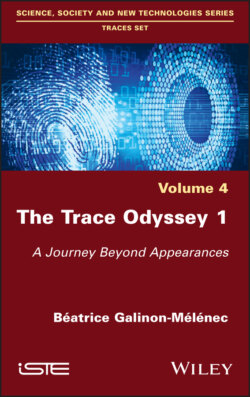Читать книгу The Trace Odyssey 1 - Beatrice Galinon-Melenec - Страница 21
I.14. Permanent evolution of the corps-trace
ОглавлениеThe interrelationship between the corps-trace and the “milieu” (Watsuji 2011), in which it is integrated, is permanent. The interactions are multi-scale and they integrate all the relationships of the corps-trace with the living as with inanimate matter. These interactions are dependent on the organic system in which the trace is integrated, from the level of the cell to the entire organism. In this, the corps-traces are inscribed not only with the conséquences-traces of its socio-individual45 history, but also with the collective traces of evolution. The corps-trace thus appears to us as being at the origin of the semiotic process between a human being and the Real46.
This highlighting of the body’s role as an operator of the semiotic function is not unique. The body’s role has been recognized by other authors, like Fontanille (2011)47 and Greimas (1993)48. However, despite their analyses of the body in the semiotic process, many authors consider the body as a whole after the analysis of thought and speech, thus constituting an ever-active remnant of Descartes’ cogito ergo sum. Conversely, the terminology corps-trace (with a hyphen) aims to draw attention to how the whole body is affected by its interactions with the human or non-human milieu/environment, the senses becoming a prerequisite for the perception of the trace, as a part of the Real, and for its possible enunciation.
Figure I.5 illustrates the idea that each individual’s corps-trace not only carries the conséquence-trace of interactions with his or her milieu (Watsuji 2011)49, from birth, but also the conséquences-traces of those who preceded him or her in his or her genealogy50.
Figure I.5. Permanent evolution of the corps-trace
Today’s human being is the result of a succession of consequences where we find “the first particles, the atoms, the molecules, the stars, the cells, the organisms, the living beings, to these curious animals that we are [...]. All succeeding one another in the same chain, all are driven by the same movement [...]”. Moreover, our bodies are composed of the elements “that once founded the universe” (Reeves et al. 1996, p. 9, author’s translation).
